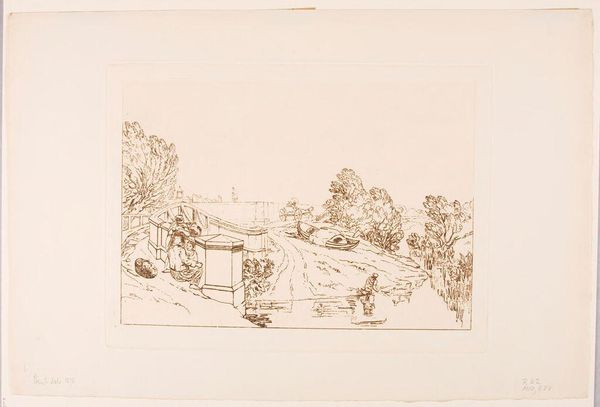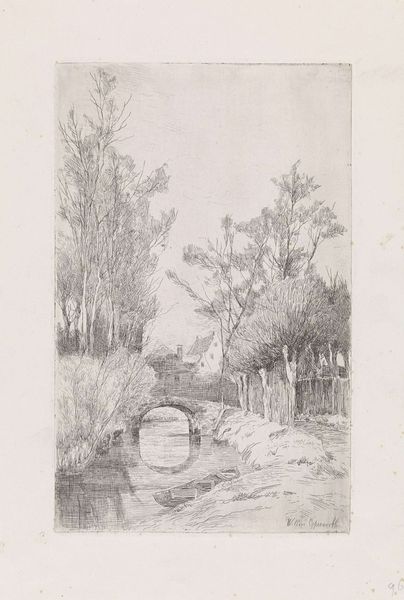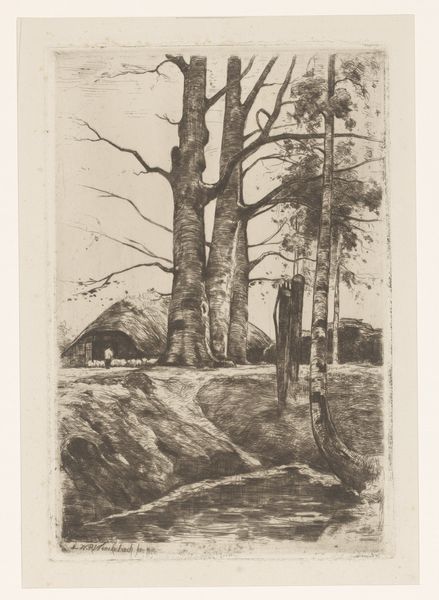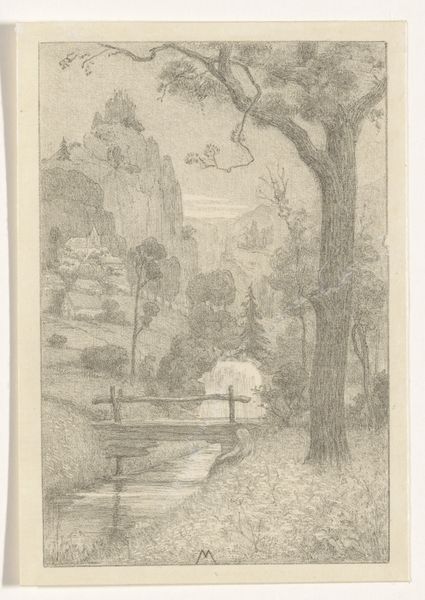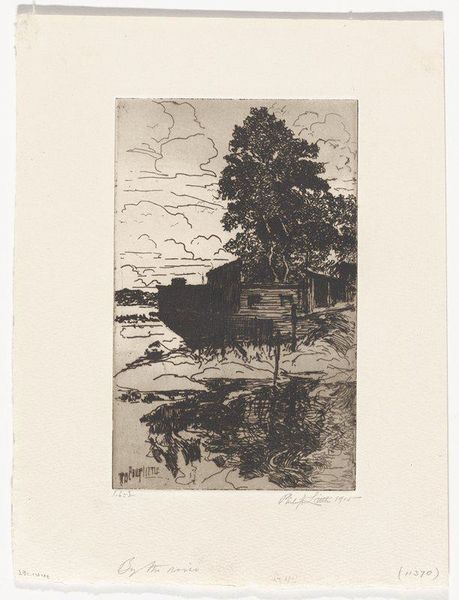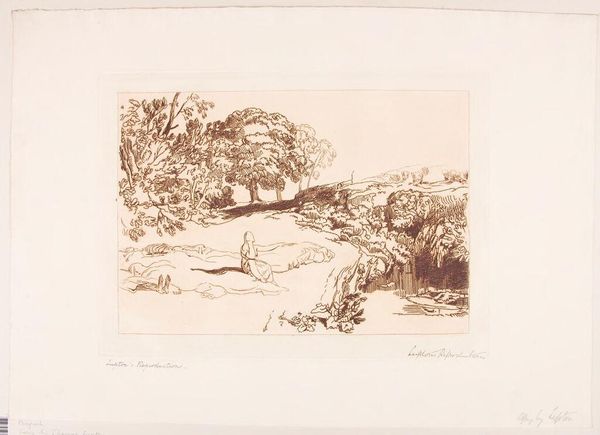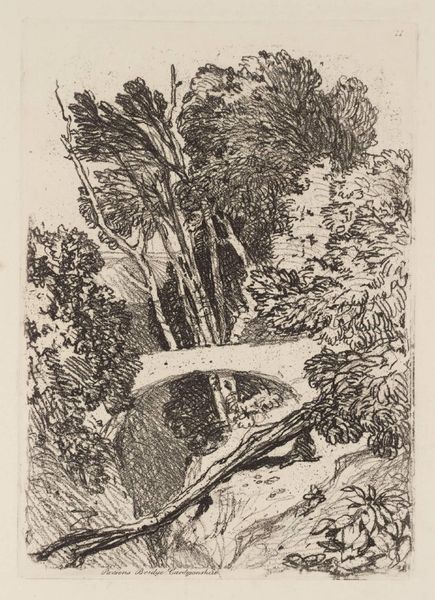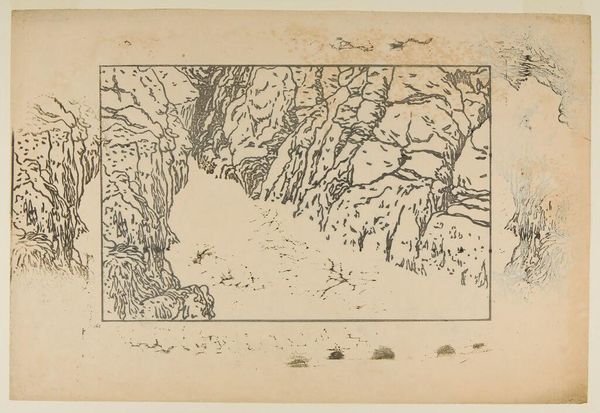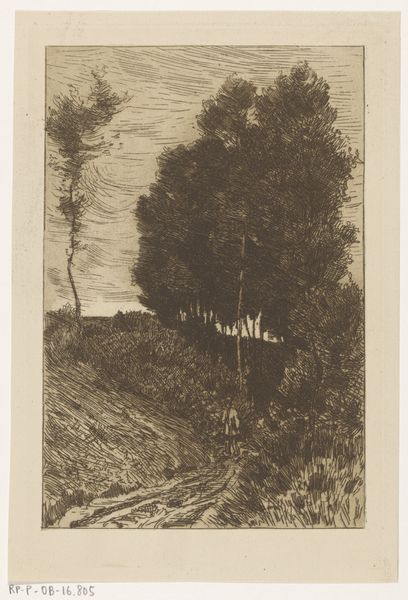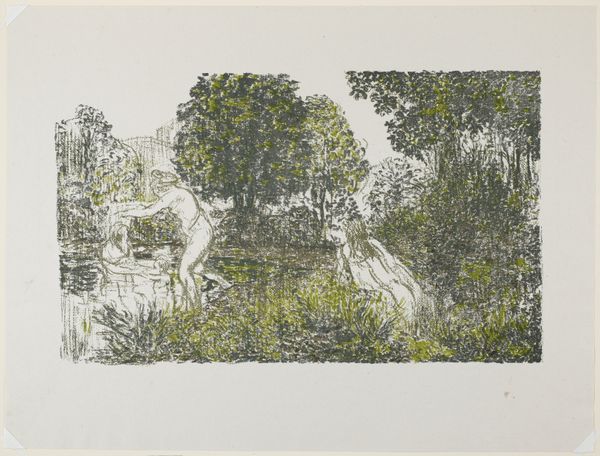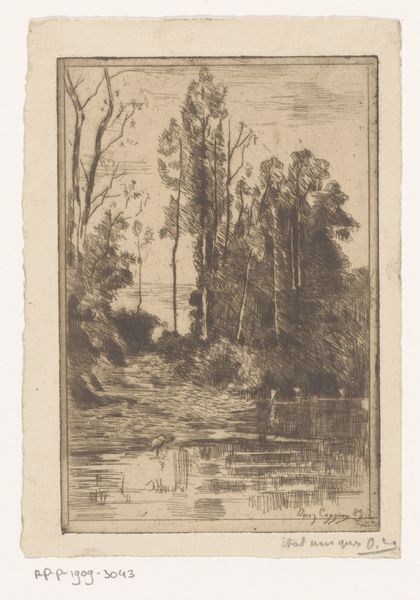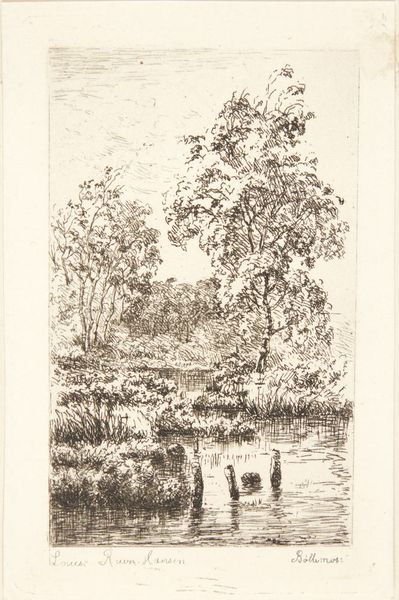
#
art-nouveau
# print
#
landscape
#
england
Dimensions: 7 13/16 × 5 13/16 in. (19.84 × 14.76 cm) (image)8 5/8 × 6 5/16 in. (21.91 × 16.03 cm) (sheet)
Copyright: No Copyright - United States
Curator: Looking at this print, "Autumn," by Elizabeth Christie Austen Brown, dating from somewhere between 1900 and 1920, I'm struck by the combination of the English landscape tradition and Art Nouveau sensibilities. It’s a charming piece residing here at the Minneapolis Institute of Art. Editor: Oh, how lovely! It's so tranquil, isn’t it? Immediately, I feel a nostalgic tug. The muted colors, the little bridge, even the cows have this wistful, old-world charm. Almost like stepping into a storybook… one that smells faintly of damp earth and fallen leaves, naturally. Curator: Precisely! Austen Brown’s artistic process certainly played a crucial role in that impression. She’s consciously flattening perspective and emphasizing decorative line—classic Art Nouveau strategies. And prints themselves were increasingly democratized at this time allowing artists more accessibility to distribution and a growing consumer base hungry for artwork for their homes. Editor: Mmm, absolutely. Thinking about technique, I'm wondering if she found that stylistic constraint creatively freeing. Like writing a poem in a particular meter or rhyming scheme: confines amplifying inspiration, don’t you think? It definitely imbues a subtle tension—nature observed, but ever-so-slightly… elevated. Curator: Good point. It would have changed her labor—reduced dimensionality requiring a specific craft that still highlights landscape through careful observation. Think of this artwork amidst broader conversations around labor itself, like those spearheaded by William Morris at the time, who were reacting to industrialization through artistic production and challenging conventional material values. Editor: Yes, I do love it, makes you think that if Morris took up children's book illustration he would aim for just this sort of whimsy! It feels incredibly personal, a reflection of Austen Brown’s subjective experience of the season, as much as an objective study. Like a half-remembered dream of an autumn afternoon. Curator: A beautifully rendered memory indeed—one interwoven with shifts in artistic production and accessibility, labor itself. A small window, but one reflecting grander changes, both culturally and materially. Editor: Absolutely! I’ll leave this looking for my wellies for a refreshing stroll—a daydream for sure!
Comments
minneapolisinstituteofart almost 2 years ago
⋮
Elizabeth Christie Austen Brown specialized in the saturated colors of early evening, when it’s time to lead the cows back home. She was skilled at distilling her compositions, jigsaw-like, to their essential forms. This is probably a view of the French countryside; Austen Brown and her artist husband, Thomas Austen Brown (1857–1924), had a studio in the artist colony of Camiers, a village in northern France.
Join the conversation
Join millions of artists and users on Artera today and experience the ultimate creative platform.
